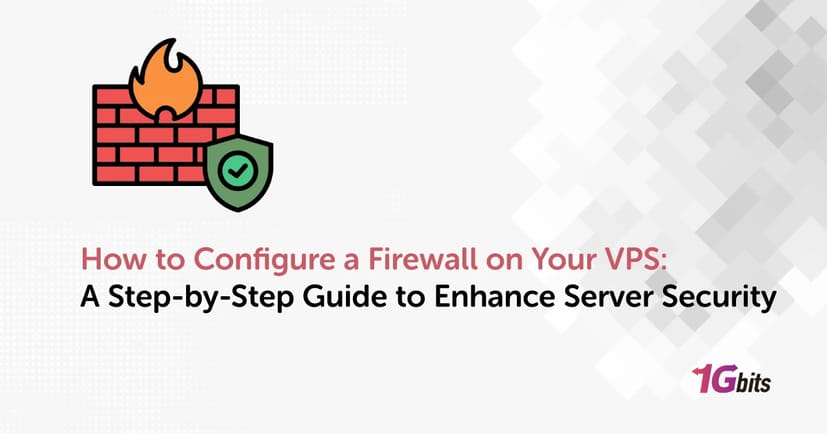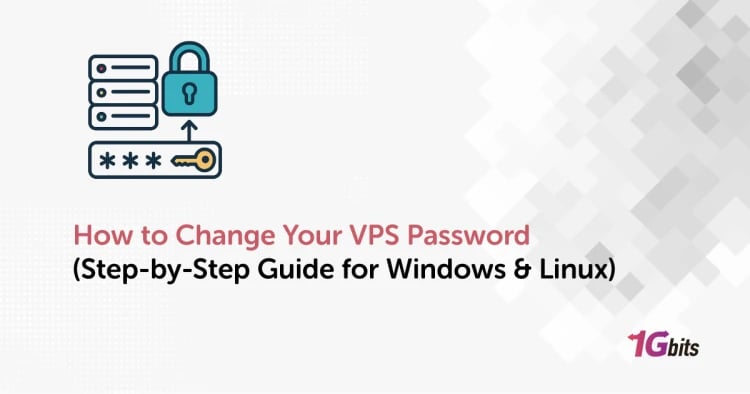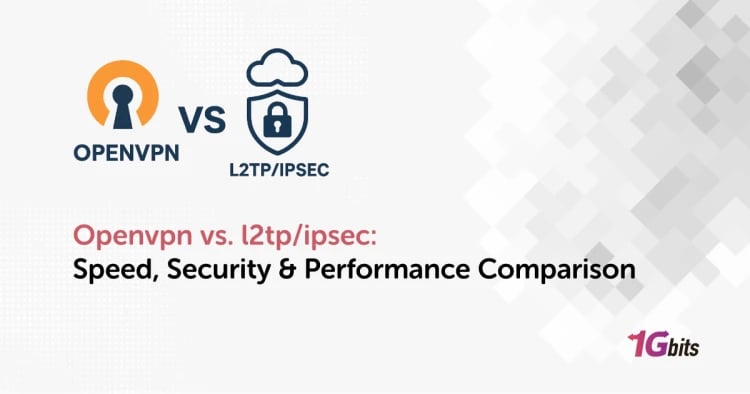When it comes to securing a VPS, knowing how to configure a firewall on your VPS is essential for protecting your server and data. A firewall acts as a gatekeeper, filtering traffic to prevent unauthorized access and malicious attacks. This guide will show you how to configure a firewall on your VPS step by step, whether you need to configure a firewall on VPS Mac, Linux, or Windows. Learning how to configure a firewall on your VPS is crucial for any server owner, as it enhances the security of your VPS firewall setup. If you are just starting and want to configure a firewall after learning how to setup a VPS server, this article covers all you need. From basic rules to advanced filtering, we’ll walk you through how to configure a firewall on your VPS so you can ensure a secure environment while confidently managing your VPS. If You need to Buy VPS, visit Buy VPS Hosting.
The Importance of VPS Security
Securing your VPS (Virtual Private Server) is critical to ensure your data, applications, and resources are protected from unauthorized access, malicious attacks, and potential vulnerabilities. Implementing robust security measures, such as learning how to configure a firewall on your VPS, can significantly reduce risks and safeguard your server environment. This section highlights the importance of VPS security and emphasizes the key role of firewalls, including steps on how to configure a firewall on your VPS for Windows 10 and Mac operating systems. If you need to optimize your VPS, read Optimize Your VPS for Maximum Performance.
1. Protecting Sensitive Data
One of the most significant reasons for prioritizing VPS security is to protect sensitive data. Whether you are hosting a website, running applications, or managing databases, your server stores critical information. If left unprotected, this data becomes vulnerable to breaches, which can result in financial losses or reputation damage.
A properly configured firewall is one of the first lines of defense against unauthorized access. By understanding how to configure a firewall on your VPS, you can control traffic entering and leaving your server. Whether you are using Windows 10 or Mac, knowing how to configure a firewall on your VPS allows you to block malicious IP addresses, restrict unnecessary ports, and filter data to keep your information secure.
2. Preventing Unauthorized Access
Hackers often exploit weak server configurations to gain unauthorized access to VPS environments. Default settings or open ports can expose your server to brute force attacks, malware injection, or exploitation of vulnerabilities. Therefore, configuring your firewall plays a crucial role in restricting access to only trusted IPs and services.
If you are using Windows 10, how to configure a firewall on your VPS involves enabling the Windows Defender Firewall, setting up inbound and outbound rules, and specifying allowed IP addresses. On Mac systems, the process is slightly different but equally important. Knowing how to configure a firewall on your VPS Mac involves navigating to system preferences, enabling the built-in firewall, and configuring specific rules to manage server traffic. By taking these steps, you significantly minimize the risk of unauthorized access.
3. Mitigating DDoS and Malicious Attacks
Distributed Denial of Service (DDoS) attacks and malware infections are among the most common threats targeting VPS servers. Such attacks flood your server with malicious traffic, rendering it slow, unresponsive, or completely offline. Without security measures, including a configured firewall, your server becomes an easy target for attackers.
Understanding how to configure a firewall on your VPS is essential for mitigating these threats. A properly set-up firewall allows you to filter suspicious traffic, block repetitive requests from the same IP, and prevent malicious packets from overloading your server. Whether you need to configure it on Windows 10 or Mac, taking the time to learn how to configure a firewall on your VPS ensures you can identify and address such threats before they cause damage.
4. Enhancing Server Performance
A secure VPS is not just about protection; it’s also about performance. When malicious traffic or unauthorized requests flood your server, it consumes valuable resources like bandwidth, CPU, and RAM. This can lead to slower application performance, longer load times, and reduced user satisfaction.
By configuring your firewall, you optimize server performance by allowing only trusted traffic to access the server. If you are running your VPS on Windows 10, learning how to configure a firewall on your VPS will help you set up rules that prioritize clean, efficient traffic. For Mac users, knowing how to configure a firewall on your VPS Mac ensures that your system remains streamlined by filtering out irrelevant or harmful requests.
5. Compliance and Trust
For businesses and developers, maintaining compliance with data protection laws is mandatory. Regulations like GDPR, HIPAA, and PCI-DSS require organizations to implement security measures that protect sensitive data stored on servers. If your VPS security is compromised due to poor configurations, it could result in hefty fines or legal consequences.
Learning how to configure a firewall on your VPS is a straightforward yet effective step to meet compliance requirements. A well-configured firewall demonstrates your commitment to protecting user data and creates trust with your clients and stakeholders. Whether you are working on Windows 10 or Mac systems, knowing how to configure a firewall on your VPS ensures you remain compliant and secure.
The importance of VPS security cannot be overstated. From protecting sensitive data to mitigating threats and optimizing performance, implementing strong security measures like firewalls is essential. Understanding how to configure a firewall on your VPS empowers you to take control of server traffic, ensuring only trusted connections interact with your environment.
Whether you are using Windows 10 or Mac, knowing how to configure a firewall on your VPS is a critical step in securing your server. By taking proactive measures, you reduce risks, enhance server stability, and foster trust with users who rely on the services hosted on your VPS. Don’t leave your server unprotected—secure it today and safeguard your valuable data.
What is a VPS Firewall?
A VPS firewall is a security mechanism that protects your Virtual Private Server (VPS) by filtering incoming and outgoing traffic based on predefined rules. Acting as a barrier between your server and potential threats, a firewall helps prevent unauthorized access, blocks malicious traffic, and ensures your VPS operates securely. For individuals and businesses hosting applications, websites, or critical data, setting up a firewall is an essential step in maintaining a secure server environment.
A VPS firewall can be software-based, built into the server’s operating system, or hardware-based, involving external devices. Regardless of the type, its purpose is to control traffic to and from your VPS by examining data packets and allowing or denying access based on set conditions.
Understanding how to configure a firewall on your VPS is critical to utilizing this security tool effectively. For users working with Windows 10, the process involves enabling the Windows Defender Firewall, creating inbound and outbound rules, and defining access permissions for specific applications or IP addresses. Learning how to configure a firewall on your VPS Windows 10 is a straightforward yet vital step in ensuring a secure and reliable server.
Mac users also benefit from built-in firewall capabilities. Knowing how to configure a firewall on your VPS Mac includes enabling the macOS firewall, customizing access permissions, and adding exceptions to manage server traffic efficiently. Each platform offers unique tools and interfaces, but the underlying goal remains the same: to safeguard your VPS against unauthorized access and cyberattacks.
A properly configured firewall strengthens the overall security of your VPS by:
-
Preventing unauthorized access from hackers or bots.
-
Blocking malicious software or traffic from compromising your server.
-
Allowing only trusted IPs, services, and applications to connect.
Whether you are managing a VPS for personal use or business applications, understanding how to configure a firewall on your VPS is essential. The process varies slightly based on your operating system, but both how to configure a firewall on your VPS Windows 10 and how to configure a firewall on your VPS Mac follow clear, structured steps that anyone can implement with basic server knowledge.
A VPS firewall is not just a security feature; it’s a necessity. By learning how to configure a firewall on your VPS, you take a proactive step in protecting your server, data, and users from potential threats.
Benefits of a VPS Firewall
A Virtual Private Server (VPS) firewall is a crucial component in securing your server and optimizing its performance. Acting as the first line of defense, a VPS firewall filters and manages incoming and outgoing traffic, ensuring that only legitimate data packets reach your server. For server administrators, developers, and business owners, understanding how to configure a firewall on your VPS is essential to take full advantage of its benefits. Whether you are using Windows, Linux, or macOS, setting up a firewall can protect your VPS from unauthorized access, malicious attacks, and performance degradation. In this article, we’ll explore the key benefits of using a VPS firewall and highlight the importance of learning how to configure a firewall on your VPS Mac or other operating systems. For more tricks and information read How to Secure Servers and 5 Essential VPS Security Measures for Small Businesses.
1. Enhanced Security Against Cyber Threats
One of the primary benefits of a VPS firewall is its ability to enhance your server’s security. Without a firewall, your VPS is exposed to malicious attacks, including hacking attempts, Distributed Denial of Service (DDoS) attacks, and malware infections. Firewalls filter traffic by monitoring data packets and blocking unauthorized access before it reaches your server.
Learning how to configure a firewall on your VPS is critical to ensuring that your server only communicates with trusted IP addresses and applications. If you are using macOS, knowing how to configure a firewall on your VPS Mac can help you enable the system’s built-in firewall, create custom rules, and prevent unauthorized entry into your server environment. By blocking suspicious traffic and securing open ports, a firewall minimizes vulnerabilities and strengthens your server’s defenses against cyber threats.
2. Control Over Server Traffic
A VPS firewall gives you complete control over the traffic entering and leaving your server. This control allows you to decide which services, IP addresses, and ports can access your VPS, reducing the risk of unauthorized or malicious connections.
Understanding how to configure a firewall on your VPS is essential for customizing traffic rules that meet your server’s needs. For example, you can set rules to allow SSH access only from specific IP addresses or block unnecessary ports to prevent exploitation. If you are managing a macOS-based VPS, learning how to configure a firewall on your VPS Mac allows you to fine-tune these settings and filter traffic effectively. This level of control ensures that your VPS remains secure while enabling smooth operations for legitimate users and services.
3. Protection Against DDoS Attacks
DDoS (Distributed Denial of Service) attacks are a common threat for VPS owners. In a DDoS attack, malicious actors overwhelm your server with a flood of fake traffic, causing slowdowns, performance issues, or even downtime. Firewalls act as a protective shield, filtering out abnormal traffic patterns and preventing these attacks from overwhelming your server.
Knowing how to configure a firewall on your VPS is a proactive way to defend against DDoS attacks. By setting rules to detect and block repetitive requests or suspicious IP addresses, your firewall can effectively stop a DDoS attack in its early stages. For macOS users, learning how to configure a firewall on your VPS Mac allows you to leverage macOS’s built-in firewall features and additional third-party tools to protect your VPS from such threats.
4. Improved Performance and Resource Management
A VPS firewall not only improves security but also enhances server performance by blocking unnecessary or malicious traffic. Unauthorized requests consume valuable resources, such as bandwidth, CPU, and memory, which can affect the performance of your applications or websites.
By learning how to configure a firewall on your VPS, you can restrict access to trusted users and services, ensuring that only relevant traffic reaches your server. This optimization prevents resource waste and allows your VPS to perform efficiently under normal conditions. For macOS-based servers, understanding how to configure a firewall on your VPS Mac ensures that you can set up custom rules to eliminate unwanted traffic and improve resource allocation.
5. Prevention of Unauthorized Access
Unauthorized access is one of the most significant risks for any server. Hackers use brute-force attacks, vulnerabilities, or open ports to gain entry to servers and compromise data. A VPS firewall is essential in preventing unauthorized access by monitoring and restricting connections to trusted users.
When you know how to configure a firewall on your VPS, you can implement rules that allow access only from specific IP addresses or block attempts from suspicious sources. For macOS users, learning how to configure a firewall on your VPS Mac ensures that you can secure open ports and manage permissions effectively. This approach minimizes the risk of breaches and keeps your server environment safe from external threats.
6. Compliance with Security Standards
Many industries and businesses must comply with data protection regulations, such as GDPR, HIPAA, or PCI-DSS, to ensure customer data remains safe. Firewalls are an essential part of meeting these security requirements by protecting data from unauthorized access or exposure.
Knowing how to configure a firewall on your VPS allows you to demonstrate compliance with security standards by implementing strong protection measures. Whether you are managing a server for a business application, eCommerce site, or healthcare service, a properly configured firewall ensures that you meet the necessary security guidelines. For macOS users, learning how to configure a firewall on your VPS Mac enables you to take advantage of built-in tools to maintain compliance.
7. Reduced Downtime and Improved Reliability
A secure and optimized VPS translates to improved reliability and reduced downtime. Firewalls help prevent server overload caused by malicious traffic or DDoS attacks, ensuring your server remains available for legitimate users.
By learning how to configure a firewall on your VPS, you can block harmful traffic while maintaining consistent performance. If you are using macOS, knowing how to configure a firewall on your VPS Mac provides an additional layer of control and security that minimizes disruptions. This proactive approach ensures that your VPS remains stable, reliable, and responsive under various conditions.
8. Simplified Management of Security Policies
Firewalls provide a centralized way to manage security policies on your VPS. With a few configurations, you can define rules for different services, applications, and users, streamlining the process of securing your server. Understanding the differences between VPS vs VDS can help you determine which hosting solution offers the best security and performance for your firewall configurations
Learning how to configure a firewall on your VPS simplifies the management of these policies by allowing you to customize rules based on your server’s requirements. For macOS-based servers, understanding how to configure a firewall on your VPS Mac ensures that you can easily modify or update security policies as needed. This flexibility makes it easier to maintain a secure environment without complex manual configurations.
A VPS firewall is an essential tool for securing your server, protecting sensitive data, and ensuring optimal performance. By filtering and controlling incoming and outgoing traffic, firewalls prevent unauthorized access, block DDoS attacks, and minimize resource consumption. Learning how to configure a firewall on your VPS is a critical step in maximizing these benefits, regardless of whether you use Windows, Linux, or macOS.
For macOS users, knowing how to configure a firewall on your VPS Mac allows you to take advantage of the built-in firewall tools and tailor security settings to your specific needs. By implementing a VPS firewall, you enhance server reliability, comply with security standards, and safeguard your valuable resources from evolving cyber threats.
Firewall Options
A firewall is a critical security tool that filters incoming and outgoing traffic to protect your Virtual Private Server (VPS) from unauthorized access and cyber threats. There are various firewall options available, each catering to different server environments and security requirements. Understanding these options is essential for implementing the right level of protection for your server. While a firewall is crucial for any server, understanding the differences between VPS vs Cloud hosting can help you choose the best option for your security and performance needs.
1. Software-Based Firewalls
Software firewalls are installed directly on your VPS and operate at the operating system level. They are highly flexible and allow you to customize traffic rules to suit your needs. Once your firewall is configured, you can explore various things to do with VPS, such as setting up a web server, creating virtual networks, or hosting custom applications.
Popular examples include:
-
UFW (Uncomplicated Firewall): A beginner-friendly tool for Linux servers.
-
iptables: A powerful, rule-based firewall for advanced users.
-
Windows Defender Firewall: The built-in firewall for Windows servers.
Software firewalls are cost-effective and ideal for small to medium-sized VPS environments. They are easy to configure using command-line tools or graphical interfaces, making them a preferred choice for most VPS users.
2. Hardware Firewalls
Hardware firewalls are physical devices that filter traffic before it reaches your VPS. These firewalls operate at the network level, providing robust protection without consuming server resources. Key benefits include:
-
High performance with minimal latency.
-
Advanced security features like intrusion prevention and DDoS mitigation.
Hardware firewalls are commonly used in enterprise environments where high traffic volumes and enhanced security are priorities. They are, however, more expensive and require specialized knowledge to manage. If you're looking for a more cost-effective solution with powerful security features, consider opting for the best Windows VPS, which provides reliable performance and easy management.
3. Cloud-Based Firewalls
Cloud-based firewalls, also known as firewall-as-a-service (FWaaS), are hosted by third-party providers and filter traffic at the cloud level.
To further enhance your server’s protection, it’s crucial to secure your VPS with additional layers of security, including regular updates and strong authentication measures.
Benefits of cloud firewalls include:
-
Easy deployment: Managed through an online dashboard.
-
Scalability: Handles increasing traffic as your VPS grows.
-
Global reach: Protects servers across multiple locations.
Cloud-based firewalls are ideal for VPS users who want centralized, scalable protection without the need for hardware. Many VPS hosting providers offer integrated cloud firewall solutions as part of their packages.
If you're looking for an affordable solution to integrate with your cloud firewall, exploring cheap VPS options can provide the performance and protection you need at a budget-friendly price
4. Host-Based Firewalls
Host-based firewalls focus on securing individual servers. They allow granular control over specific ports, applications, and IP addresses. Tools like pfSense and iptables are popular examples.
By exploring these firewall options, you can choose the best solution to protect your VPS. Whether you opt for software, hardware, cloud-based, or host-based firewalls, implementing the right firewall strengthens your server's security and performance.
to test out these firewall configurations and assess the performance of your VPS, consider starting with a trial VPS to experience the features before committing to a plan.
How to Configure a Firewall on Your VPS?
Linux-based servers are among the most common VPS options. On Linux, tools like UFW (Uncomplicated Firewall) and iptables are used to configure firewalls.
Using UFW
-
Install UFW:
If UFW is not pre-installed, run:
-
sudo apt update
-
sudo apt install ufw
-
Enable UFW:
To activate the firewall, run:
-
sudo ufw enable
-
Allow Essential Ports:
By default, UFW blocks all traffic. Allow traffic for key services, such as SSH:
-
sudo ufw allow 22
For web servers, allow ports 80 (HTTP) and 443 (HTTPS):
-
sudo ufw allow 80
-
sudo ufw allow 443
-
Check Rules:
To view current rules, use:
-
sudo ufw status verbose
Using iptables
For more advanced configurations, iptables can be used:
-
Block an IP:
-
sudo iptables -A INPUT -s [IP_ADDRESS] -j DROP
-
Allow SSH:
-
sudo iptables -A INPUT -p tcp --dport 22 -j ACCEPT
Once configured, save iptables rules to ensure they persist after reboot.
3. How to Configure a Firewall on Your VPS (Windows)
For Windows-based VPS servers, the built-in Windows Defender Firewall can be used. If you're looking for a flexible and affordable solution to host your Windows-based VPS, consider VPS rental options that provide reliable performance and enhanced security features
-
Open Windows Firewall:
-
Go to the Control Panel > System and Security > Windows Defender Firewall.
-
Create Inbound Rules:
-
Select “Advanced Settings” and navigate to “Inbound Rules.”
-
Click “New Rule,” and choose “Port” to specify which ports to allow (e.g., port 22 for SSH).
-
Define whether the rule applies to TCP or UDP.
-
Set Outbound Rules:
-
Similar to inbound rules, you can create outbound rules to control outgoing traffic.
-
Test Configuration:
Use tools like PowerShell to test firewall rules and verify that traffic is being filtered appropriately.
This approach ensures that only trusted IPs and services can interact with your VPS.
4. How to Configure a Firewall on Your VPS (macOS)
macOS has a built-in firewall that can be configured to protect your VPS.
-
Enable the Firewall:
-
Go to System Preferences > Security & Privacy > Firewall.
-
Click “Turn On Firewall” to activate it.
-
Configure Advanced Settings:
-
Click “Firewall Options” to add specific applications or services that you want to allow.
-
Set Rules:
-
Use terminal commands for more control. For example, to allow SSH connections, run:
§ sudo pfctl -E
§ sudo nano /etc/pf.conf
Add rules to allow or deny specific traffic.
Learning how to configure a firewall on your VPS Mac ensures that your VPS remains secure and protected from unauthorized access.
Additionally, selecting the optimal VPS location can enhance your firewall's effectiveness by reducing latency and improving security for users in specific regions.
5. Verifying and Testing Firewall Rules
Once you have configured your firewall, it is essential to test its effectiveness:
-
Scan Open Ports: Use tools like nmap to check which ports are open:
-
nmap [VPS_IP_ADDRESS]
-
Verify Blocked Traffic: Attempt connections to blocked ports or IP addresses to ensure the firewall rules are working correctly.
-
Monitor Logs: Check firewall logs to see traffic activity and identify any suspicious behavior. For UFW, logs can be checked using:
-
sudo less /var/log/ufw.log
Configuring a firewall is a fundamental step in securing your VPS against cyber threats. By learning how to configure a firewall on your VPS, whether on Linux, Windows, or macOS, you can control access to your server and protect critical data. For macOS users, understanding how to configure a firewall on your VPS Mac ensures you can take advantage of built-in tools to secure your VPS effectively. No matter which platform you use, proper firewall configuration strengthens your server’s security, minimizes vulnerabilities, and ensures reliable performance.
Conclusion
In conclusion, learning how to configure a firewall on your VPS is essential for protecting your server from unauthorized access, cyber threats, and malicious traffic. Whether you are using Linux, Windows, or macOS, configuring a firewall ensures that only trusted connections are allowed while blocking harmful requests. Tools like UFW and iptables for Linux, Windows Defender Firewall for Windows, and the built-in macOS firewall provide flexible options for securing your VPS. By setting clear rules, regularly testing configurations, and monitoring traffic, you can create a robust defense system for your server. Understanding how to configure a firewall on your VPS not only enhances server security but also ensures its optimal performance and reliability. Regardless of the operating system you choose, taking the time to properly set up and maintain your firewall is a vital step in managing and securing your VPS effectively.
For enhanced security and performance, choosing the right VPS is just as important as configuring its firewall. If you're looking for a reliable and high-performance VPS, check out our VPS rental services to get started today!












